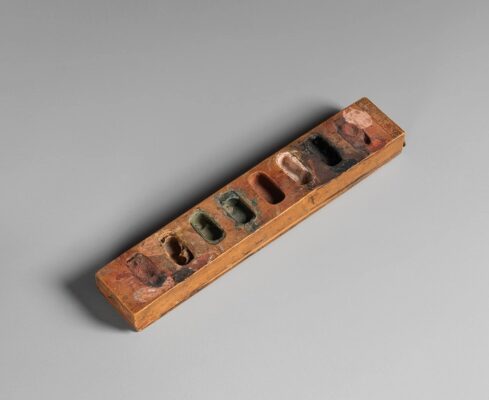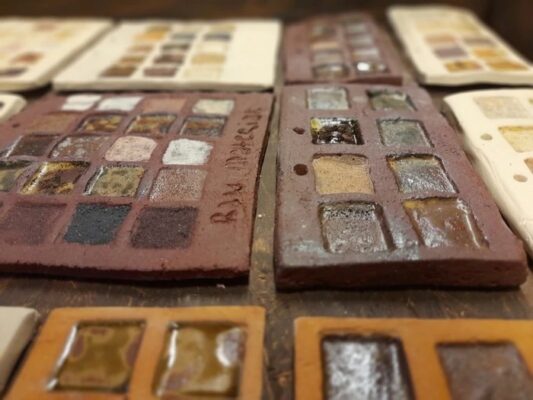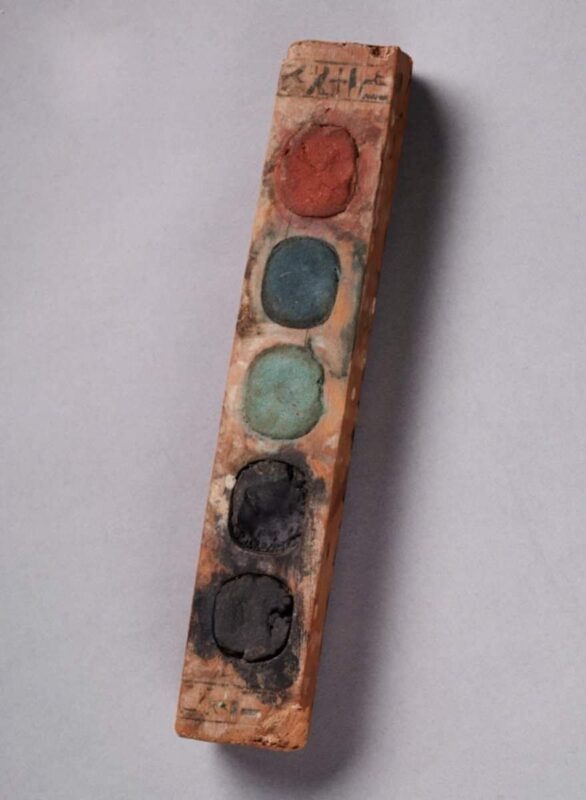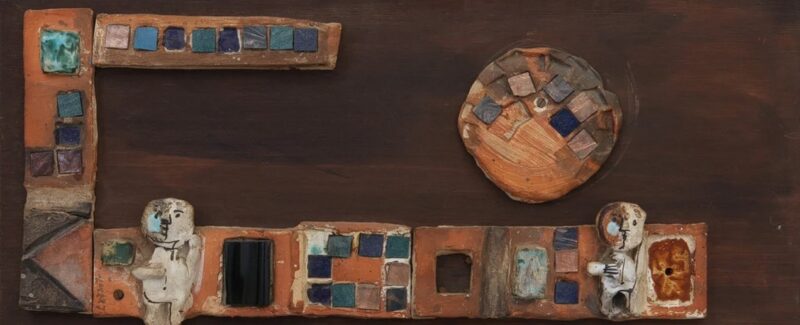A remarkable discovery has revealed a 3400-year-old ancient Egyptian paint box, offering a glimpse into the artistic practices of the time. This well-preserved artifact, along with its original pigments, provides valuable insights into ancient Egyptian craftsmanship, culture, and leisure activities.
Follow archeology.dulichvn.net to discover many hidden mysteries that have yet to be discovered.

The Ancient Egyptian Paint Box: A Glimpse into History
The ancient Egyptian paint box is a rare and fascinating find that dates back to around 1400 BCE, during the reign of Pharaoh Amenhotep II. This piece offers a direct connection to the artistic traditions of the time, showcasing the materials used for painting in the elite circles of Ancient Egypt.
The Original Pigments: A Palette of Ancient Colors
Inside the paint box, several pigments have been preserved, each with its own unique composition. These pigments were used for a variety of artistic and decorative purposes, showcasing the advanced knowledge and skills of ancient Egyptian artists.
Red Pigment: Red Ochre
Red ochre, one of the pigments preserved in the ancient Egyptian paint box, holds significant cultural and artistic value. A staple in ancient Egyptian artistry, red ochre is an earthy, mineral-based pigment with a deep, rich hue. It was widely used in Egyptian art, particularly for creating realistic skin tones in depictions of humans, both in daily life and in tomb scenes. Additionally, red ochre was employed for other decorative purposes, often adorning the walls of tombs, temples, and monuments, where it symbolized life and vitality. Its abundance in the ancient Egyptian landscape made it a reliable and symbolic color, frequently appearing in both funerary art and ritual contexts.
Blue Pigment: Egyptian Blue
Egyptian blue, a vibrant and striking synthetic pigment, was highly esteemed by the ancient Egyptians. Unlike naturally occurring pigments, Egyptian blue was created through a sophisticated process that involved heating a mixture of copper and sand at high temperatures.
This innovative technique resulted in one of the earliest known synthetic pigments in history, prized for its brilliant hue and durability. Egyptian blue was used extensively across various forms of art, including frescoes, statues, and jewelry. Its bright, azure color symbolized the heavens, divinity, and eternity, making it especially prominent in sacred and royal depictions. As a luxury pigment, it was often reserved for the elite and for items of significant cultural and religious importance.
Green Pigment: A Mixture of Egyptian Blue, Yellow Ochre, and Orpiment
The green pigment found in the paint box was a sophisticated blend of Egyptian blue, yellow ochre, and orpiment, creating a striking and vivid green hue. This mixture was often employed to represent nature, fertility, and rebirth—key themes in ancient Egyptian culture.
Green was commonly used in the depiction of vegetation, the Nile River, and in scenes of fertility and abundance, often associated with the gods of growth and rejuvenation. The combination of Egyptian blue, yellow ochre (a pigment derived from clay), and orpiment (a yellow arsenic mineral) created a color palette that was not only visually appealing but rich in symbolic meaning. This green pigment was integral to the ancient Egyptians’ ability to evoke life, nature, and renewal in their artistic creations.

The Historical Figure Behind the Paint Box: Amenemope
The inscription on the paint box reveals that it belonged to Amenemope, a Vizier during the reign of King Amenhotep II. As a high-ranking official, Amenemope would have had access to luxuries like this paint box, which he likely used for leisure activities such as painting.
Amenemope: Vizier of Amenhotep II
Amenemope held the prestigious position of Vizier during the reign of Pharaoh Amenhotep II in the 18th Dynasty of Egypt. As Vizier, he was the second most powerful figure in the kingdom, directly serving the Pharaoh and overseeing the administration of Egypt’s vast territories.
This high rank provided him with access to considerable wealth, resources, and luxury items, such as the exquisite paint box discovered. In his role, Amenemope was tasked with managing everything from judicial matters to royal decrees, but his elite status also allowed him to indulge in personal interests, including the practice of art. The possession of such a refined artifact speaks to his social standing and the privileges afforded to those in the highest echelons of Egyptian society.
Art as a Leisure Activity for the Elite
For individuals like Amenemope, painting was more than just a profession—it was a form of personal expression and a leisurely pursuit that reflected his sophisticated lifestyle. While many Egyptians used art in service of religious or royal duties, the elite often engaged in creative activities for enjoyment and intellectual stimulation.
The discovery of Amenemope’s paint box suggests that, as a member of the upper class, he engaged in artistic endeavors during his leisure time, perhaps as a way to relax, demonstrate his refined taste, or simply for personal fulfillment. This contrasts with the art created by artisans for state purposes, offering a glimpse into the more personal, human side of elite life.
A Cultural Legacy Preserved
The paint box is not merely an artistic tool—it is a direct link to the cultural and artistic traditions of ancient Egypt. Preserved for over 3,400 years, it stands as a testament to the advanced craftsmanship, creativity, and aesthetic values of the time. Through this remarkable artifact, we are given a rare opportunity to understand how the elite engaged with art, not only in the context of official duties but as a meaningful form of personal expression. The paint box is more than just a relic; it is a window into the life of an elite individual in ancient Egypt, offering invaluable insights into the cultural and social practices of one of history’s most influential civilizations.

Conclusion: The Legacy of Ancient Egyptian Art
The discovery of this 3400-year-old paint box and its preserved pigments highlights the importance of art in ancient Egyptian culture. Through this artifact, we gain a deeper understanding of the materials, techniques, and social practices of one of the world’s most fascinating civilizations.



CÁC TIN KHÁC
Mary Walton: The Forgotten Inventor Who Helped Clean Up America’s Cities
Tomb of Queen Nefertari in the Valley of the Queens, Egypt
Discover the Hypostyle Hall of the Temple of Hathor at Dendera
Venus de Losange: Unveiling the Mystery of a 20,000-Year-Old Paleolithic Icon